This is what happened. At some point over the last few months I began to miss the feeling of using a camera. I missed holding a camera in my hands. I wasn’t dissatisfied with my phone; it takes excellent photos. But it’s not the same; it’s a multi-use device that also happens to take photographs. I missed using a tool designed solely for the purpose of making photographs.
So a couple of weeks ago I opened up a cupboard and looked at all my abandoned cameras. I don’t have a camera collection; I just have some cameras I’ve stopped using. Some are film cameras, some are digital. I picked up a few and handled them. It was one of those Goldilocks moments; this camera was too big, this one was too heavy, this one would require a substantial investment in film and processing.
I pulled out the last camera I’d bought–a Fujifilm mirrorless camera. I was surprised to find the battery still had a charge. So I shot a few frames around the house. It felt awkward in my hands. Worse, I’d forgotten all the familiar menu pathways. I couldn’t remember how to make the cameras do what I wanted it to do. When I put the camera back in the cupboard, I noticed the very first Fujifilm camera I bought. A small X10, the first model of the compact cameras with the letter X and two digits in the product name. I bought it back in 2012 and wrote a blog post about it.
Out of curiosity, I did a quick file search and found the last photo I shot with x10. It was from August 15, 2016 at the Iowa State Fair, at one of those rides designed to toss people around and give them the illusion of danger. I liked the photo; you can see anxiety and bravado, you can see the clinched-butt need to appear calm and unfazed.
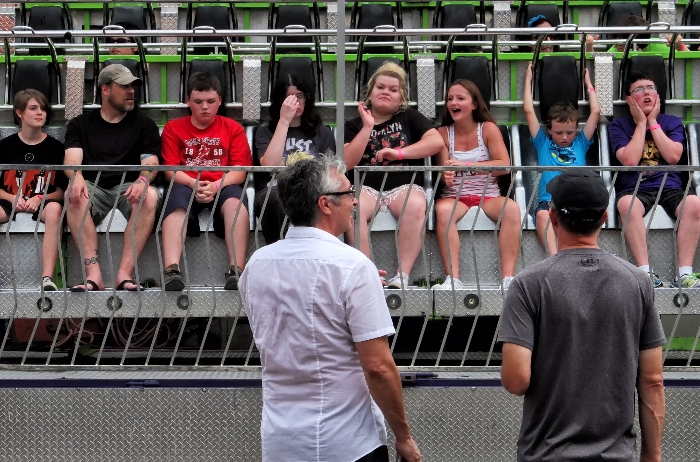
That photo was the spark I needed. So I dug around in the cupboard until I found the battery charger and charged the batteries. It had been so long since I’d used the camera that I had to re-set everything from scratch, including the date and time. I even tracked down the manual for the X10 online. I’m sure I must have at least glanced at the manual when I bought the camera, but I was unaware of some of the things the camera could do. For example, I created a custom setting for black-and-white shots, which is something I’ve never done before (and I’ll come back to that in a bit).

Yesterday I set out to see if I could remember how to use a camera. Well, that’s not entirely true; I set out to go geocaching with my brother, but I used the excursion as an opportunity to re-acquaint myself with the X10. The little camera was a tad too big to slip into the pocket of my jeans, but it slid easily into the pocket of my hoodie. It weighed next to nothing. While my brother did the grunt work of geocaching, I watched a guy in a red vest fidget outside a barbershop in a Latino neighborhood. And the camera felt right.
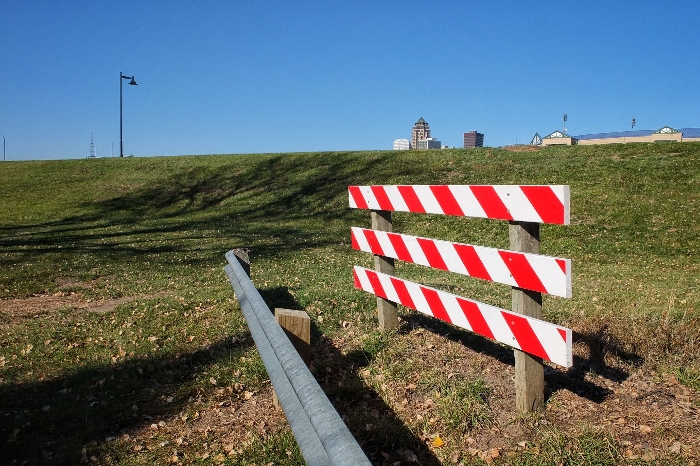
The camera felt right but the final results were…mixed. The first thing I had to re-adapt to was the parallax effect since the X10 is a sort of retro-designed rangefinder camera. I suspect a lot of folks have never used a rangefinder camera and are wondering, “Greg, old sock, what the hell is this parallax effect?” Unlike your basic single-lens-reflex camera, which allows you to see the scene through your lens, a rangefinder viewfinder is only near the lens. So you’re not seeing exactly what the lens sees: that’s the parallax effect. You have to learn to adjust to the small shift between what you see and what the lens sees. The closer you are to the subject, the more drastic the effect.
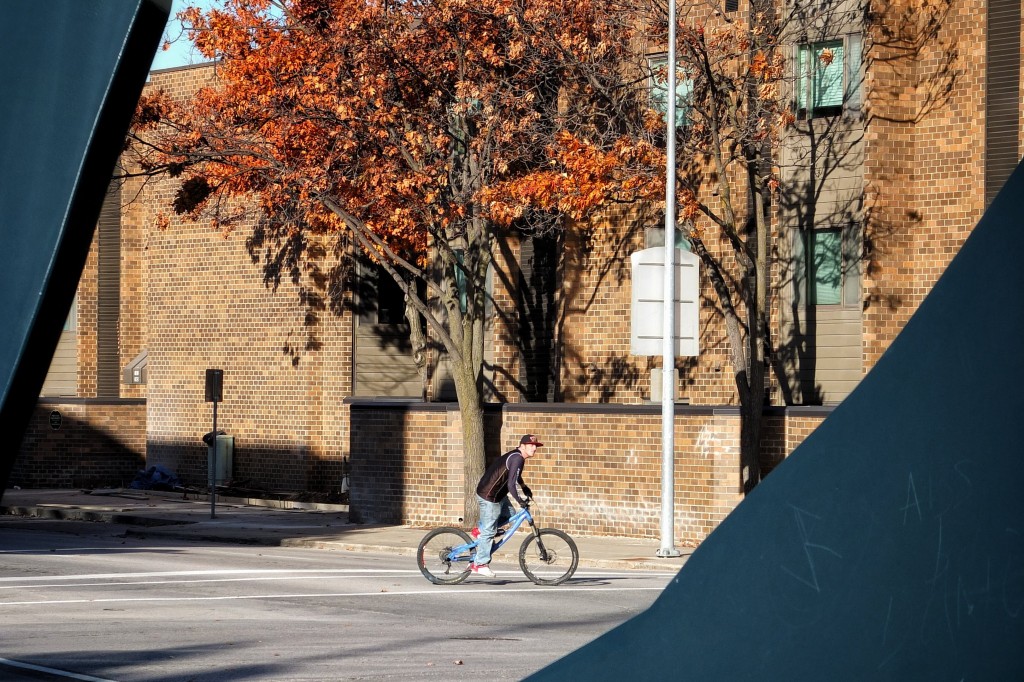
In the photo above, I wanted to catch the rider in that patch of sunlight between the shadow and the tree. I was a fraction of a second late with the shutter as I panned to follow the kid, but I want to claim the tiny amount of parallax exacerbated the problem (DISCLAIMER: it almost certainly did not exacerbate the problem, but it’s a convenient thing to blame). If I was a fraction of a second too late releasing the shutter in the photo above, I was a fraction too soon in the photo below.
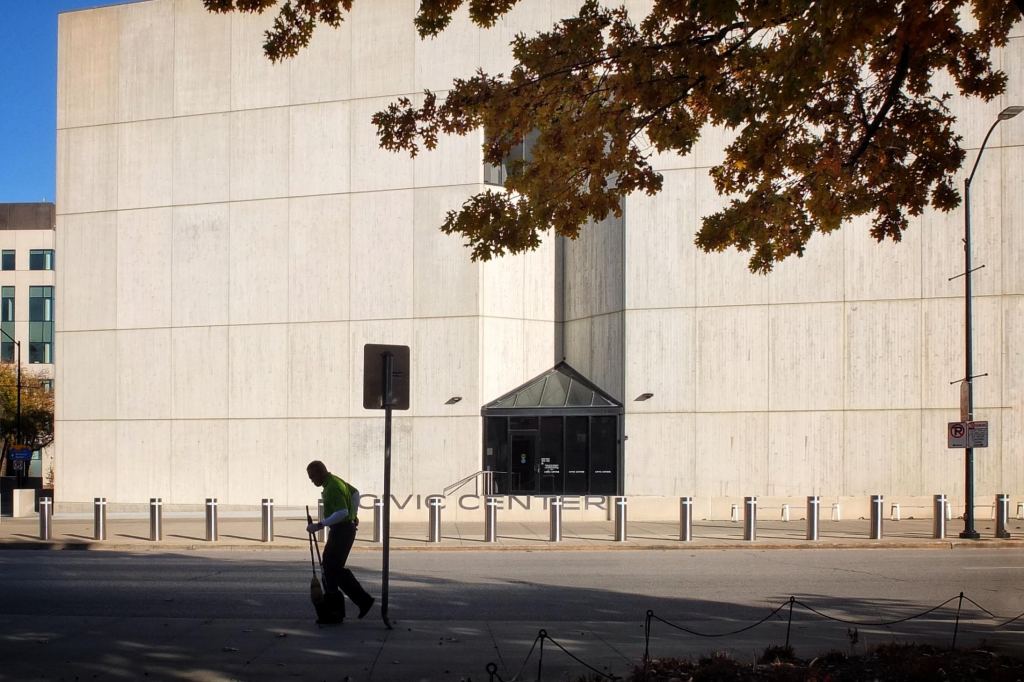
I’d hoped to catch the street cleaner at a point just beyond the sign identifying the location as the Civic Center. I was a tad too quick on the trigger. Much of the day was spent confronting the reality of the Ferris Bueller School of Photography. Life moves pretty fast. If you don’t stop and look around once in a while, you could miss it. I was lucky not to miss the look of disdain by this privileged white woman as she watched a black man securing some home furnishings in the back of a rusty pick-up.

I mentioned earlier that I created a custom setting for black-and-white shots. This is one of the advantages of digital photography. With a film camera, you either have to change from color film to black-and-white film or carry two cameras. With a digital camera, you just turn a dial or change a menu option. I decided to try to create a setting that would sorta kinda almost mimic Daido Moriyama’s Provoke period. High contrast, high ISO, high grain. (Of course, digital imagery doesn’t have grain; it has noise, which isn’t remotely the same…but what the hell, I set the noise allowance as high as possible).
And hey, guess what. It didn’t work.
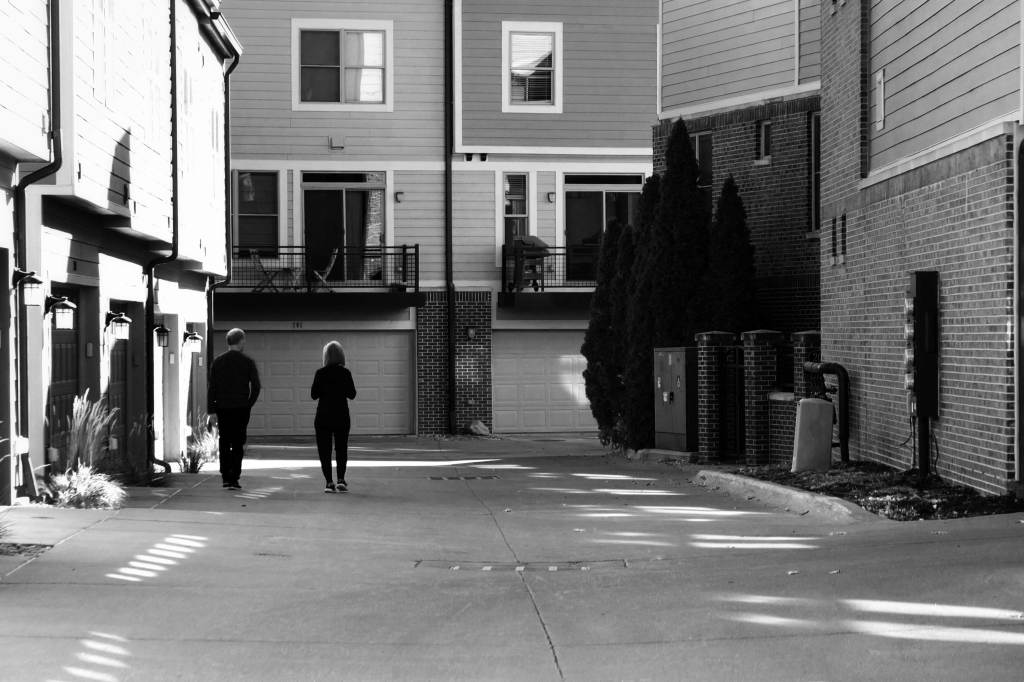
It wasn’t really a surprise that it didn’t quite work. Partly because Moriyama wouldn’t photograph a couple walking behind some upscale trendy townhomes. Partly because I didn’t see many high contrast scenes. And partly-mostly because I’m no Daido Moriyama. I shot maybe a dozen frames (okay, digital imagery doesn’t actually have frames either) using the custom setting. Most of them, like the photo above, are painfully dull.
I was only pleased with one black-and-white shot. Frankly I’ve shot MUCH better black-and-white photos with my cell phone (which, if you’re interested, you can see in a post about practicing photography in public). These photos were less black-and-white and more black-and-shite. But I intend to experiment more. Maybe I’ll figure out how to get the camera to give me the b&w photos I want.
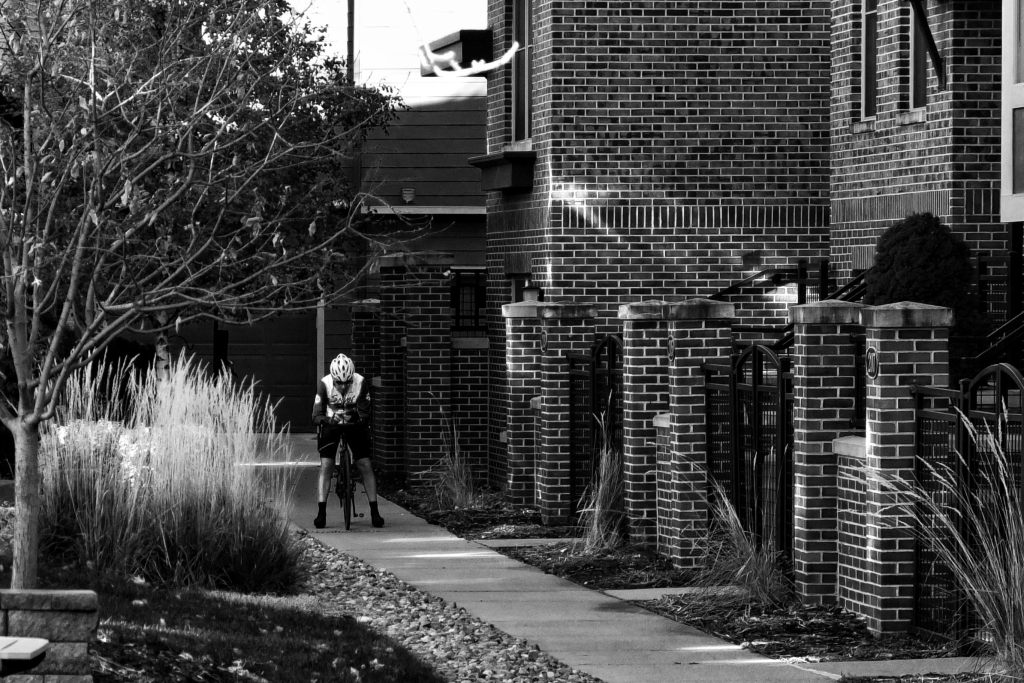
At the heel of the hunt, though, I’m happy with the old X10. I’m reminded that my approach to almost everything I do is grounded in the same attitude. I want to do things well, but so long as I’m enjoying myself, I’m not that concerned with the results. And folks, I had fun with that little X10. I plan to start toting it around with me more often. In fact, I just ordered two extra batteries.

fun story….keep a camera in your hands:)
LikeLike
OMG dude, I want a real camera too! My phone takes great pics but I want a real camera in the worst way. Love your pics!
LikeLike
I continue to use my Fine Pix HS 25 EXR many years after purchasing it. I have yet to find a cell phone camera with the resolution of the EXR. Long distance or a butterfly always returns colorful photos. Good article with photos makes it fun to read.
LikeLike
Pingback: farewell to flickr | gregfallis.com
Pingback: new camera…and lawdy | gregfallis.com